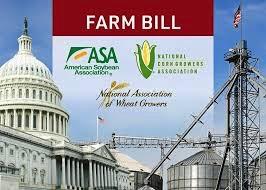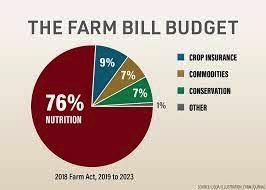 During the past week, the Congressional Budget Office projected that the ten-year cost of the 2023 Farm Bill would attain $1.5 trillion, about 57 percent higher than the 2018 Farm Bill. It is emphasized that estimates are provisional and are essentially projections based on broad assumptions relating to initial costs and inflation that will occur over a decade. The Thrifty Food Plan is the major contributor to the increase and takes into account the Congressional Budget Office estimate for SNAP expenditure at $93 billion for the 2023-2032 period.
During the past week, the Congressional Budget Office projected that the ten-year cost of the 2023 Farm Bill would attain $1.5 trillion, about 57 percent higher than the 2018 Farm Bill. It is emphasized that estimates are provisional and are essentially projections based on broad assumptions relating to initial costs and inflation that will occur over a decade. The Thrifty Food Plan is the major contributor to the increase and takes into account the Congressional Budget Office estimate for SNAP expenditure at $93 billion for the 2023-2032 period.
Members of the Senate Agricultural, Forestry and Food Committee consider the projected expenditure on the Thrifty Food Plan to be “unacceptable.” Senator John Boozman (R-AR) highlighted the extent of the $250 billion cost of the program from July 2021 to May 2022 coinciding with additional COVID expenditures that formed the baseline on which the projection was calculated.
the program from July 2021 to May 2022 coinciding with additional COVID expenditures that formed the baseline on which the projection was calculated.
If extra funding is assigned to SNAP, other programs will have to be shaved, including commodity support and conservation. It is apparent that negotiations to produce an acceptable farm bill will be contentious. The respective House and Senate chairs will have to demonstrate diplomacy and tact in achieving a bipartisan consensus in their respective committees. Compromise rather than brinkmanship will be required to draft a Farm bill that can be enacted and that satisfies the needs of diverse stakeholders and political ideologies.